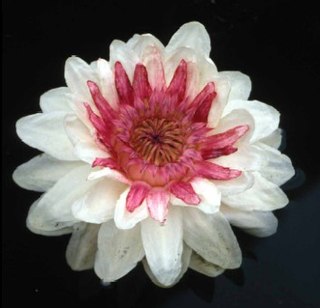
Herring are forage fish, mostly belonging to the family Clupeidae.

Yanachaga–Chemillén National Park is a protected area located in the region of Pasco, Peru. It preserves part of the rainforests and cloud forests of central Peru.

Oenocarpus bacaba is an economically important monoecious fruiting palm native to South America and the Amazon Rainforest, which has edible fruits. This plant is cited in Flora Brasiliensis by Carl Friedrich Philipp von Martius. It can reach up to 20–25 metres tall and 15–25 cm in diameter. It grows in well-drained sandy soils of the Amazon basin.

Oenocarpus is a genus of pinnate-leaved palms (Arecaceae) native to Trinidad, southern Central and tropical South America. With nine species and one natural hybrid, the genus is distributed from Costa Rica and Trinidad in the north to Brazil and Bolivia in the south.

Rodrigo Bernal González is a Colombian botanist who specialises in the palm family. Bernal was a faculty member at the Institute of Natural Sciences, National University of Colombia until 2007. He received his Ph.D. from the University of Aarhus, Denmark, in 1996. He was general curator of the National Colombian Herbarium (1986-1987), and editor of the scientific journal Caldasia.

The green aracari, or green araçari, is a toucan, a near-passerine bird. It is found in the lowland forests of northeastern South America, in the northeast Amazon Basin, the Guianas and the eastern Orinoco River drainage of Venezuela. At 30–40 cm. (12–16 in) long and weighing 110–160 grams, it is the smallest aracari in its range, and among the smallest members of the toucan family.
This article is a list of biological species, subspecies, and evolutionary significant units that are known to have become extinct during the Holocene, the current geologic epoch, ordered by their known or approximate date of disappearance from oldest to most recent.
Oenocarpus circumtextus is a species of flowering plant in the family Arecaceae. It is found only in Colombia.
Oenocarpus simplex is a species of flowering plant in the family Arecaceae. It is found only in Colombia and Panama.

The Flora of Colombia is characterized by 130,000 species of plants that have been described within Colombian territory.
Bat Conservation International (BCI) is an international nongovernmental organization working to conserve bats and their habitats through conservation, education, and research efforts.

Oenocarpus bataua, the patawa, sehe, hungurahua (Ecuador) or mingucha, is a palm tree native to the Amazon rainforest. The tree produces edible fruits rich in high-quality oil.

The World's 25 Most Endangered Primates is a list of highly endangered primate species selected and published by the International Union for Conservation of Nature (IUCN) Species Survival Commission (SSC) Primate Specialist Group (PSG), the International Primatological Society (IPS), Global Wildlife Conservation (GWC), and Bristol Zoological Society (BZS). The IUCN/SSC PSG worked with Conservation International (CI) to start the list in 2000, but in 2002, during the 19th Congress of the International Primatological Society, primatologists reviewed and debated the list, resulting in the 2002–2004 revision and the endorsement of the IPS. The publication was a joint project between the three conservation organizations until the 2012–2014 list when BZS was added as a publisher. The 2018–2020 list was the first time Conservation International was not among the publishers, replaced instead by GWC. The list has been revised every two years following the biannual Congress of the IPS. Starting with the 2004–2006 report, the title changed to "Primates in Peril: The World's 25 Most Endangered Primates". That same year, the list began to provide information about each species, including their conservation status and the threats they face in the wild. The species text is written in collaboration with experts from the field, with 60 people contributing to the 2006–2008 report and 85 people contributing to the 2008–2010 report. The 2004–2006 and 2006–2008 reports were published in the IUCN/SSC PSG journal Primate Conservation,, since then they have been published as independent publications.

Anchylorhynchus is a genus of weevils belonging the family Curculionidae and subfamily Curculioninae. It currently includes 25 described species distributed from Panama to Argentina. Members of the genus are pollinators of palms in the genera Syagrus, Oenocarpus and Butia, with adults living in inflorescences and larvae feeding on developing fruits. The first instar larvae of Anchylorhynchus have an unusual morphology, being specialized on killing other larvae infesting the palm fruits.










